With Trengo's Integration Hub, connecting your Shopify account to your Trengo Inbox is a breeze. Please ensure you are an Admin in both Trengo and Shopify before proceeding. Please note that our integration also supports Shopify Plus.
This is a multi-step process.
Part 1: Create an app in Shopify
Integrating your Shopify store with Trengo starts in your Shopify environment, where you need to create an application for Trengo.
1. Log in to your Shopify account.

2. Navigate to the App section of Spotify. You'll find it on your left side column:
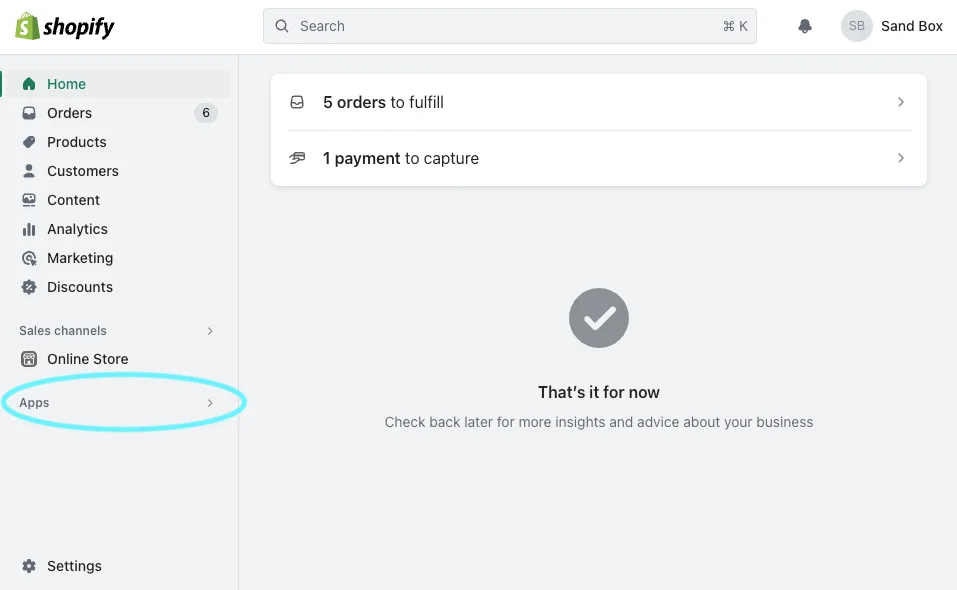
3. From the left navigation, click on the 'Apps' item or click on 'Settings' > 'Apps and sales channels'. You will end up here:

4. From the 'Apps and Sales Channels' view, click on the 'App Development' option at the top of the section:
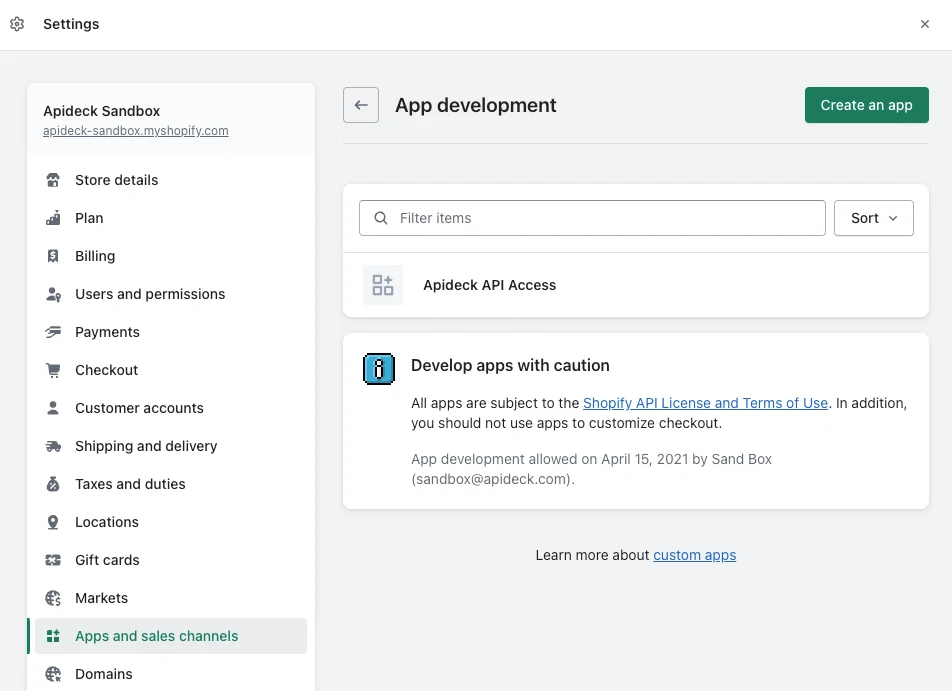
5. Click on 'Create an app' to create a new development app.
6. Enter a name for your app and click 'Create app'.

7. After creating the app, you will be redirected to the app overview page:
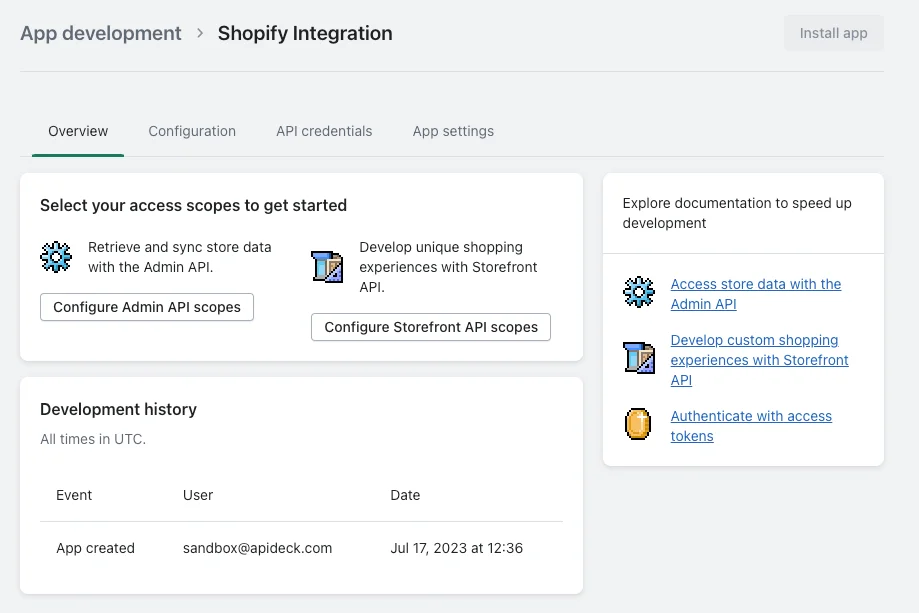
Part 2: Configure your API scopes
To access the data from your Shopify account, you need to configure the Admin API scopes.
1. Click on the 'Configure Admin API scopes' button to configure the Admin API scopes, from the 'Overview' screen or from the 'Configuration' section.
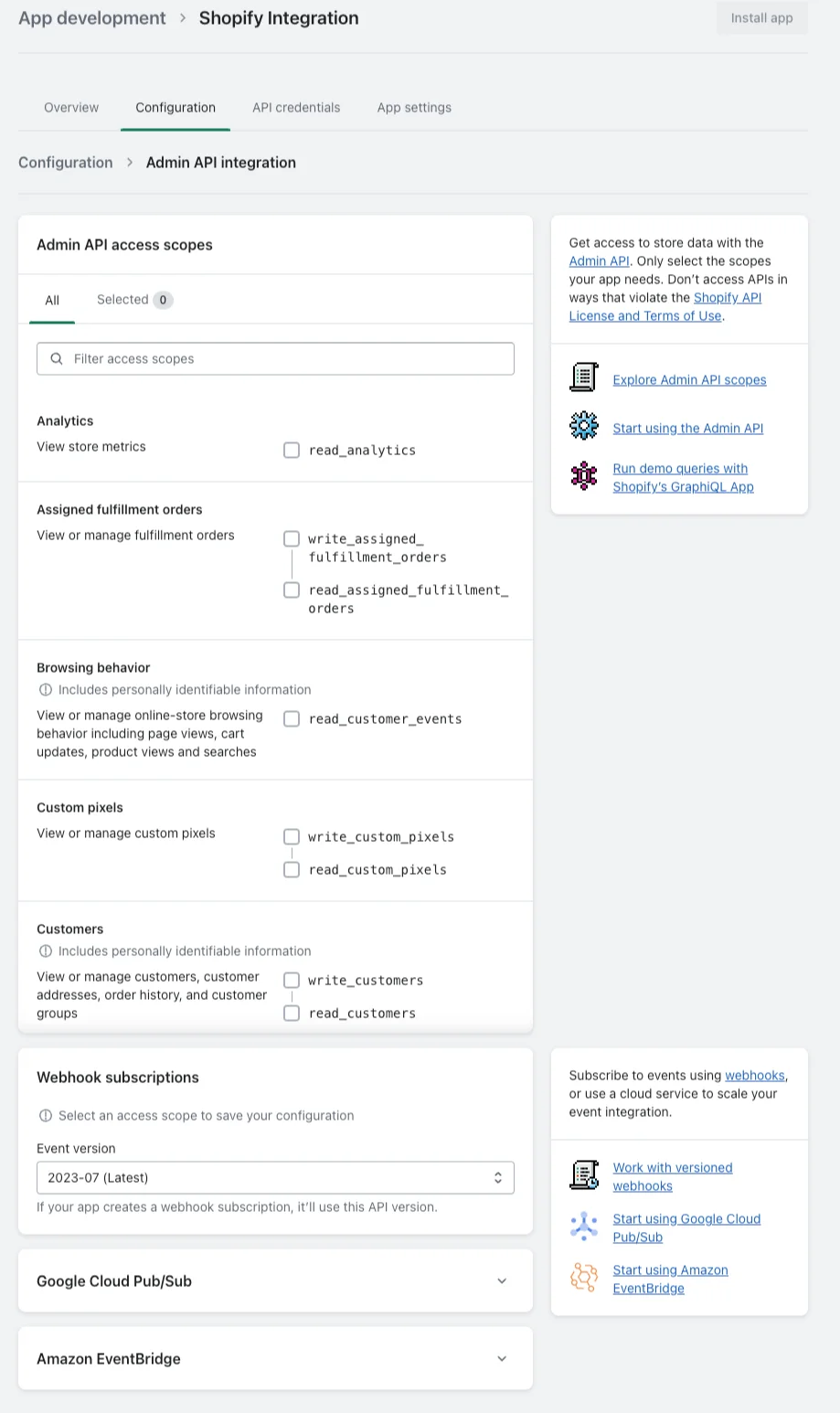
2. For the Shopify integration, you need to select the following scopes to allow the integration to read the data from your Shopify account. Shopify has a lot of scopes, so by using the 'filter' input, you can easily enable the required scopes. Suggested scopes for the reading data from your Shopify account include:
- read_assigned_fulfillment_orders
- read_customers
- read_customer_merge
- read_discounts
- read_draft_orders
- read_fulfillments
- read_fulfillment_constraint_rules
- read_gift_cards
- read_inventory
- read_online_store_pages
- read_locations
- read_merchant_managed_fulfillment_orders
- read_metaobjects
- read_orders
- read_payment_terms
- read_price_rules
- read_product_listings
- read_products
- read_purchase_options
- read_returns
- read_shipping
- read_locales
3. Once you have selected the required scopes, click on the "Save" button to save the configuration.
4. Next, navigate to the "App credentials" section to retrieve your access token by pressing the "Install app" button:
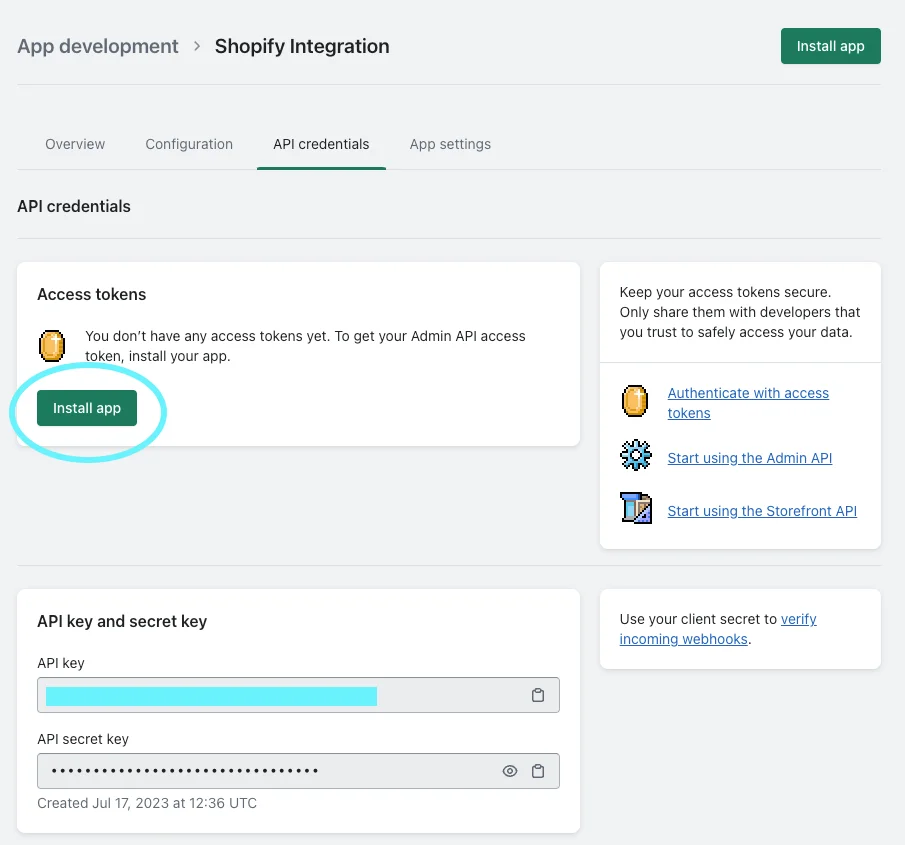
5. When the confirmation modal appears, click 'Install':

6. Your Admin Access token should now be available in your 'App Credentials' section. Make sure to keep this token in a safe place. When you open it, it should look like this:
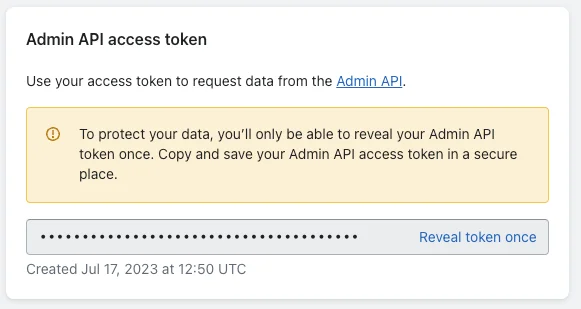
7. Click on "Reveal token once" to reveal the token and copy the token to your clipboard. You will need to provide it when integrating Shopify with Trengo.
Part 3: Integrating Shopify with Trengo
Finally! We know it's a long one, but these steps are crucial to ensuring Shopify works within the Trengo environment.
1. Navigate to Trengo Settings, then select 'Settings', followed by 'Integrations'.
2. Select 'E-commerce', then click the 'Shopify' card to open the description interface.
3. Click 'Install Integration' in the top right corner to open the installation modal.
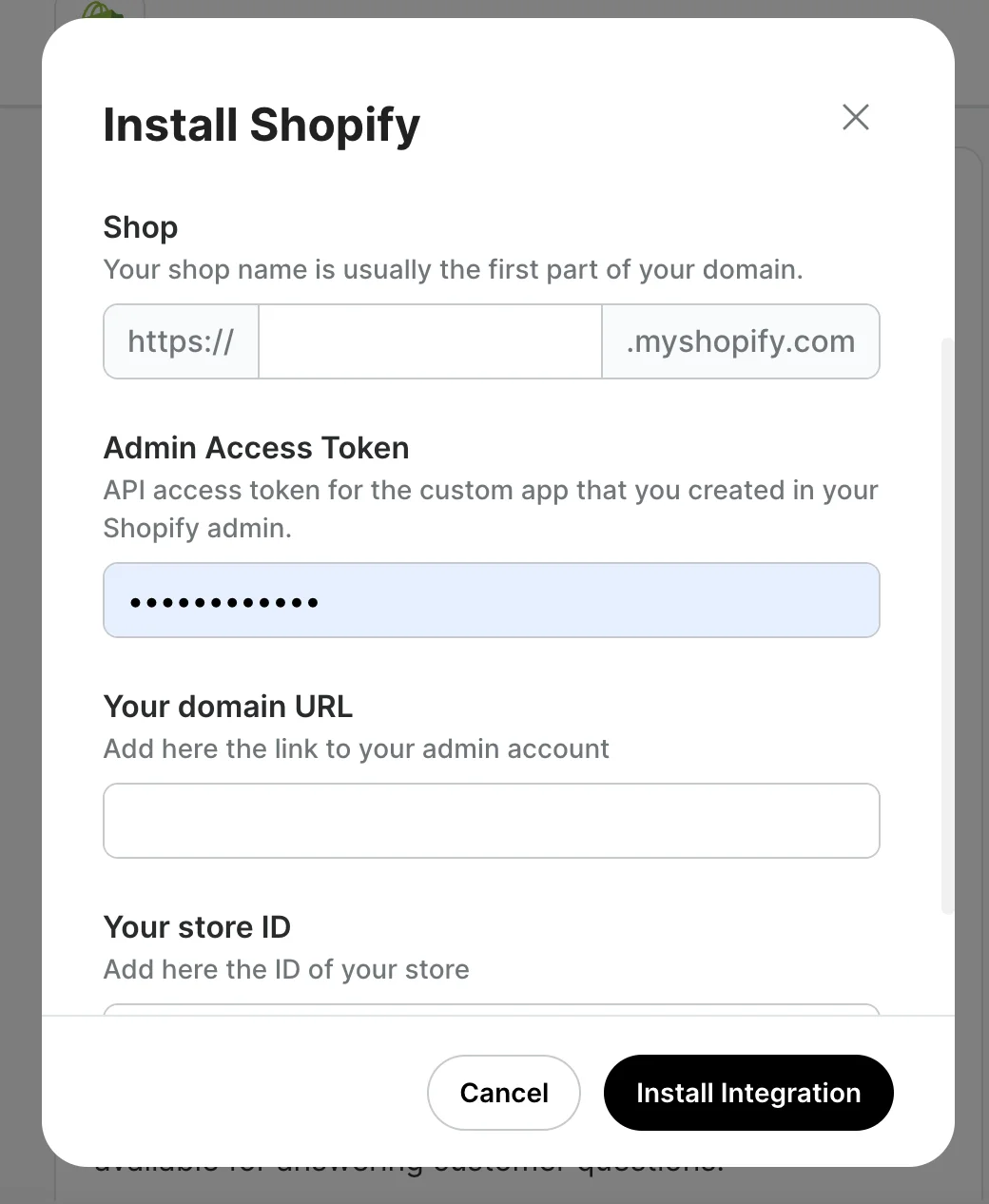
4. Enter your shop name. Note that this is usually the first part of the URL in your shop domain as the prefix https:// and the suffix .myshopify.com are added automatically.
5. Insert your Admin Access Token, which is the API access token for your custom app in your Shopify admin panel.
6. Your Store ID can be found in the Admin URL, between “/store/” and “/orders/” parameters. Usually, it looks like 7e65b4-c7
7. Enter the URL you used for your Shop name.
8. Click 'Install Integration'.
9. Congratulations! You can begin using Shopify and Trengo together in your Inbox!

























